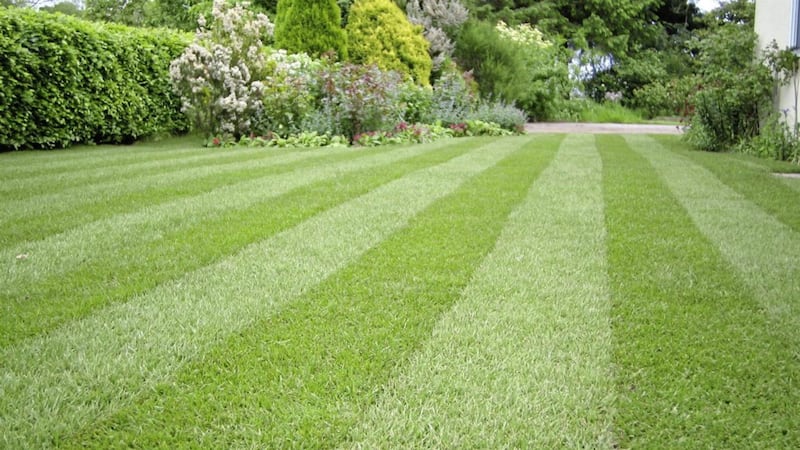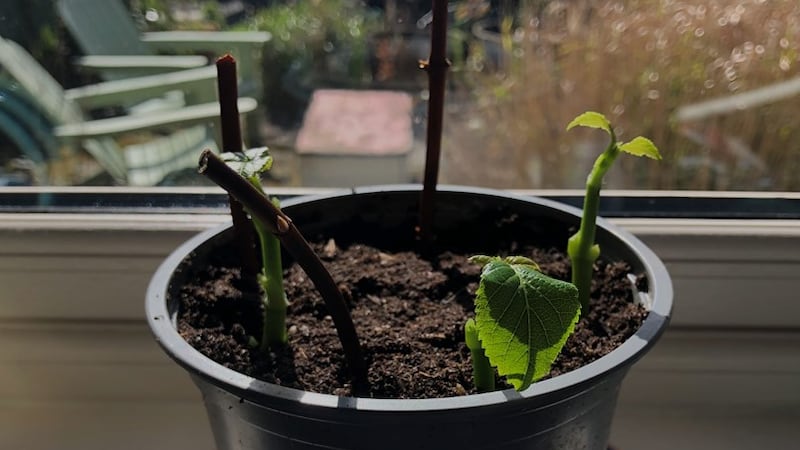IF THERE’S one topic that is guaranteed to get men reading this column it’s lawn care.
No other gardening pursuit preoccupies the male of the species quite like tending to an expanse of short grass. That’s why I don’t apologise for giving the subject a regular airing in an effort to entice this particular demographic. It is, as we say in the business, a ‘hardy annual’ – an item that crops up on the agenda every year.
Although spring (and autumn) lawn care regimes usually feature on this page at the respective times of the year, I must confess that it’s something that’s rarely top of my own to do list come spring.
Don’t get me wrong, I long for a normal spring garden, where the only thing I have to worry about is a few daisies, a bit of moss and a couple of bare patches on the lawn. Instead, my time is taken up with a range of arduous tasks such as pruning and cutting hedges before the birds start nesting, moving or planting perennials, and inevitably there’ll be other creative garden projects eating in to my time. As with every spring, my garden's a mess at the moment and it’s unlikely I’ll get a chance to attend to the lawn until early next month, which thankfully is time enough.
Spring lawn care is a laborious, time-consuming process, and if carried out correctly usually leaves your grass looking much worse than when you started. However, it’s a necessary evil if you want to maintain a healthy, verdant lawn that doesn’t compromise your organic credentials.
It’s likely many readers may have already given their lawn its first cut of the year but you can still carry out the essential annual maintenance. In fact, I’d recommend running the mower over your grass before getting stuck in, as this way you minimise the amount of moss and thatch you have to remove by hand – or rake – during the spring clean-up.
After a cut, the process proper begins with scarifying, whereby a spring-tine rake is used to remove the dead grass, roots and moss that have accumulated since last autumn. By scraping all this detritus away you let light and moisture in, and make room for new growth to emerge.
Reluctantly – as they’re instant spring pollinators – I’ll also advise you that now’s the time to remove daisies, dandelions and other perennial weeds, using a specially devised tool or an old knife to remove the entire plant rather than applying chemicals. The holes you gouge out can be filled in later.
After scarifying, aerate the ground using a fork, or for bigger areas, a spiking machine. Aerating relieves soil compaction, improves drainage and allows the grass’s roots room to breathe.
You can then reseed in areas where growth is sparse or where you’ve removed weeds. Use a mixture of loam, fine compost and sharp sand to fill any holes and then to ‘top dress’ – ie broadcast across the surface. Brush this in with a yard brush and then stand back and look at the mess you’ve made.
Within a matter of weeks, however, it’ll be looking great again, by which time it may need of a spring feed. Applying spring lawn feed, available commercially as granules or liquid, will replenish the nutrients for the growing season ahead. It’s nitrogen rich, however, which means fast, lush growth and more frequent cutting. I'd also be apprehensive about adding these chemically infused cuttings to the compost heap.








